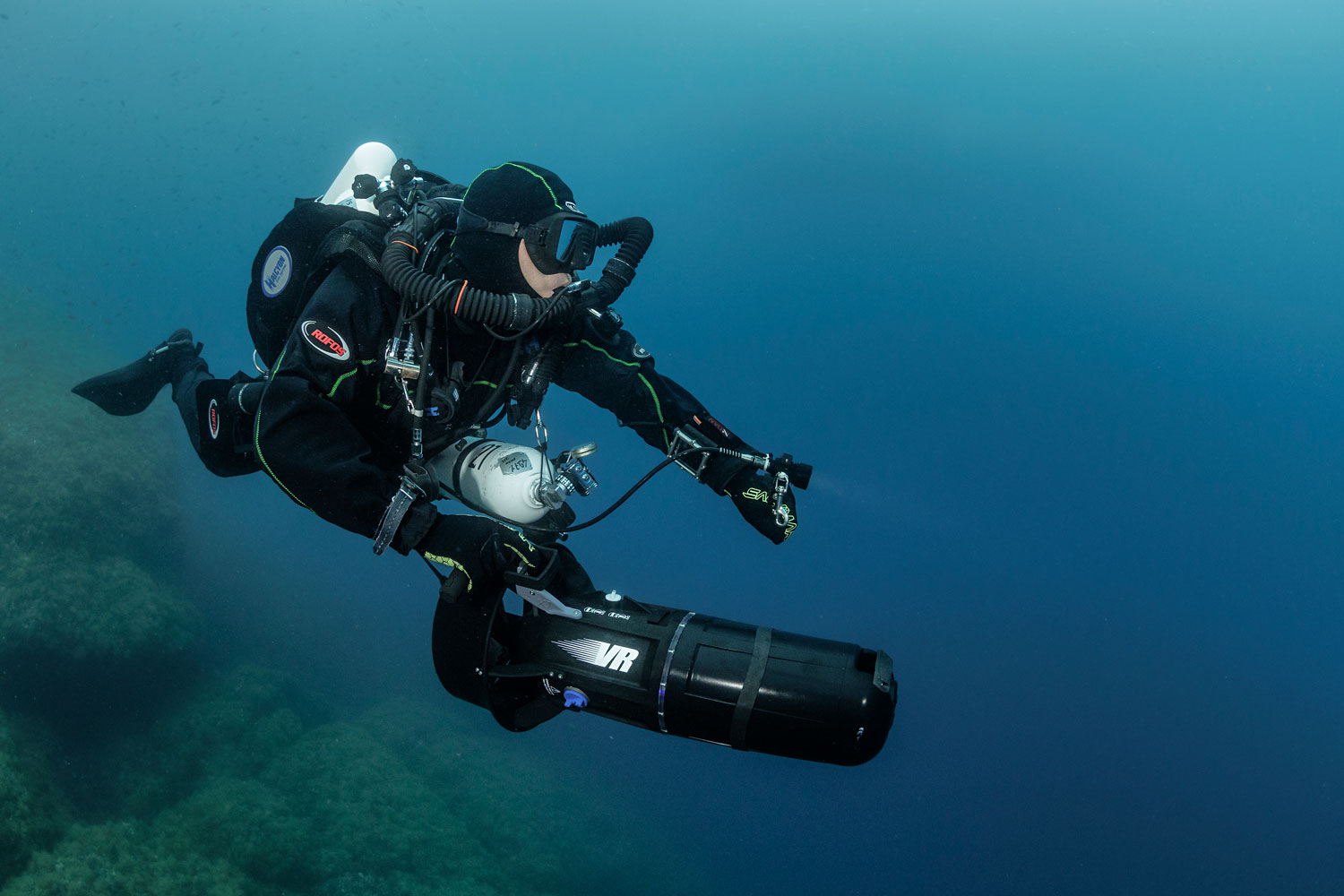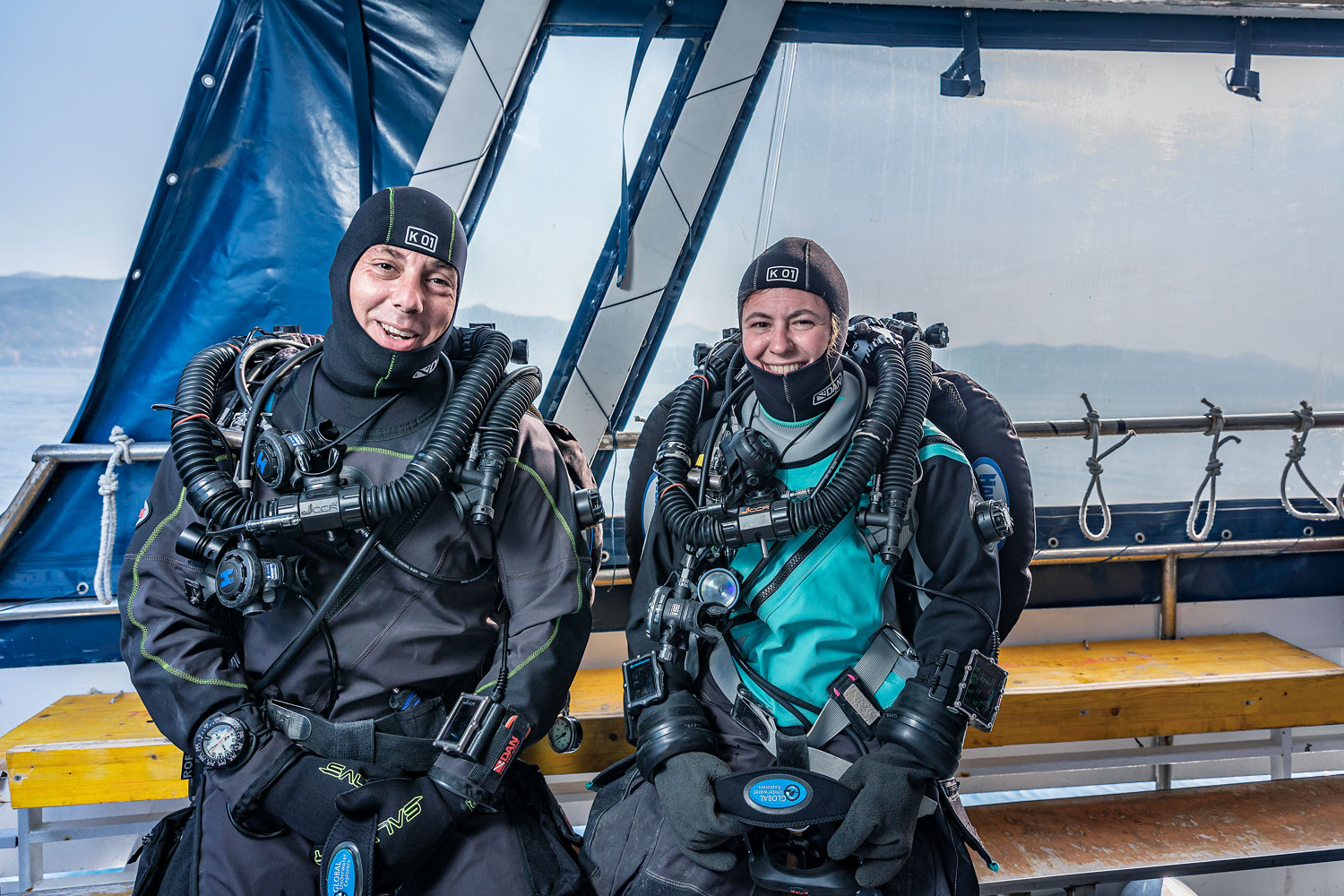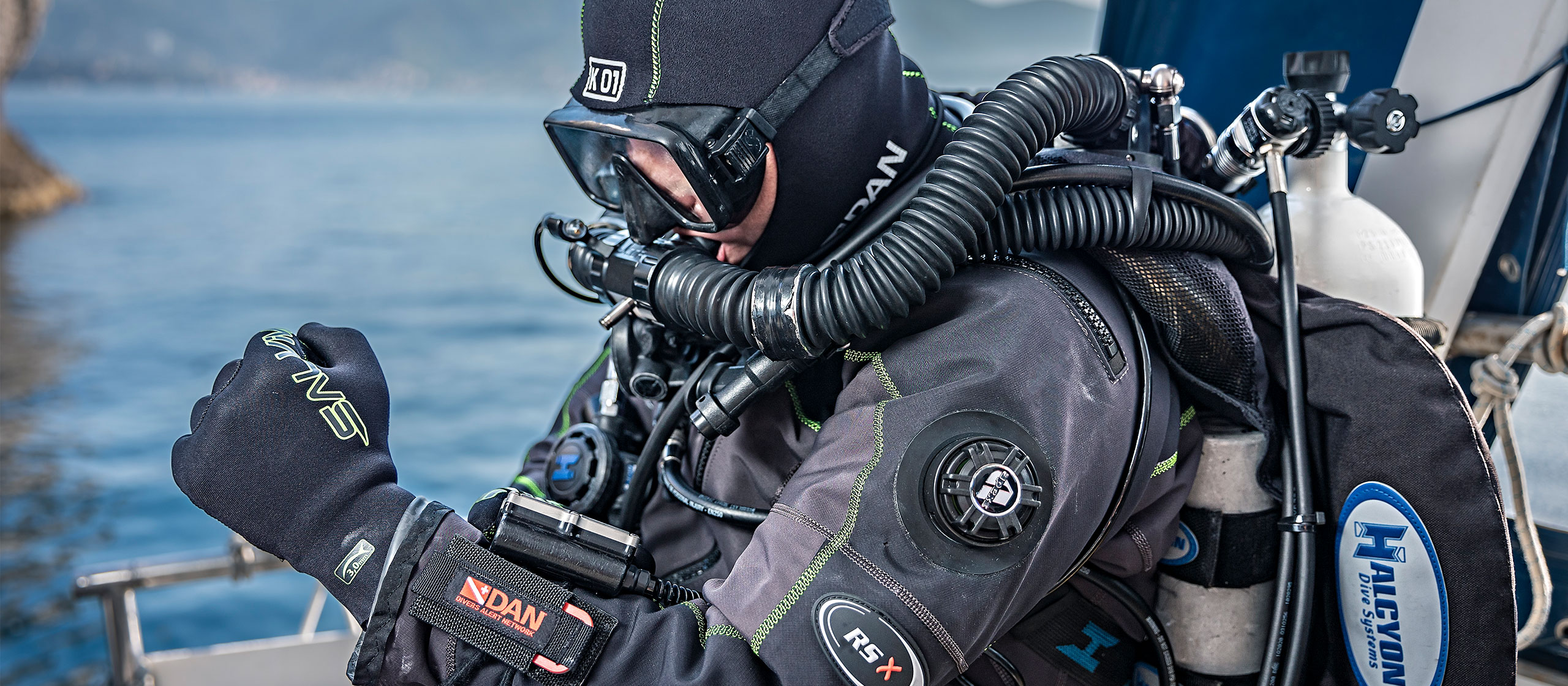Features
Going Closed Circuit: Looking for the entry point
What does it take to successfully make the transition to rebreather diving? Six experts weigh in.
Rebreathers are seeing a steady increase in popularity, a development driven by rising interest in technical diving and the skyrocketing cost of helium. At the same time, improvements in closed circuit rebreather (CCR) design, construction, and user friendliness, especially in the field of control and monitoring electronics, have made this mode of diving more accessible.
Traditionally and with the exception of some photographers, it has been mostly experienced tech and cave divers who eventually made the transition from open to closed circuit. These divers have the clearest need for the capabilities of a rebreather, and they (ought to) already have at least some of the knowledge and personal dive skills that are required to operate a rebreather safely.
However, a look at the entry requirements for a CCR course in agency training standards paints a radically different picture: In theory, you could get started on a rebreather with only a nitrox certification and as few as 25 dives under your belt.
This wide gap raises a question I am trying to explore in this article: At what level of prior training and experience does a transition to closed circuit become worthwhile, rewarding, and likely to succeed?
To get an idea of the possible answers, I interviewed six well-respected and prolific CCR instructors in Asia, Europe, and the Americas. I asked them what their average entry-level CCR student looks like and how this has changed over time, how they decide whether or not to train someone on a rebreather, and if they would accept students with no prior training or experience in tech or cave.
The responses given below are excerpts from longer conversations via email, text, or phone. You can find a brief bio and link for each instructor at the end of this article.

“Most of the students I train are technical divers,” says Matt Reed, TDI Instructor Trainer and co-owner of Evolution Diving in Malapascua, Philippines. “However, less experienced candidates have become more common recently. One of the questions I ask them is whether they plan to continue training and do more advanced dives in the future. People who are not doing deep dives are less likely to stay with CCR diving, as it’s a lot of effort for simple reef dives.”
Kelvin Davidson of Third Dimension Diving (Tulum, Mexico), reports a similar experience: “Most of the people we train on CCR are repeat visitors to our shop, and we know them as cave divers. But nowadays, strangers are starting to show up.”
Asked about his vetting process, he said: “More often than not I know the people from previous training, so I have a good idea. Otherwise I just ask for their training and experience background, and why they think they want or need a CCR. Then I pretty much go by gut feel…
Many folks who look good on paper either can’t dive that well or lack the mindset for owning a CCR. For this reason, I prefer that people use one of our units for their initial training before buying their own – it’s not great to have a hard conversation with someone who just spent 10,000 dollars.”
Like Matt, Kelvin has taught some students with no prior experience in tech or cave diving. “Especially on the Fathom Gemini, since it’s so easy to learn. Full-sized backmount rebreathers are more capable in terms of what you can ultimately do with them, but they’re also harder to master. So that can be a different story.
There are agency standards and requirements that need to be met. After that it’s really up to the instructor to use their best judgement, and to be honest and forthright with students.”
Yvonne Press, a Malta-based TDI IT and rebreather instructor, is similarly reluctant to draw hard boundaries: “I don’t think we need to force prospective CCR divers to dive OC tech first. Courses like TDI’s Air Diluent Diver (30 m, all dives within the NDL) provide a way of getting into rebreathers with a clear path of progression towards decompression CCR diving.
Instead, I try to get a feel for a person’s experience beyond just total dive numbers and certifications. If someone has been a holiday diver doing a week of diving per year for 20 years, I would probably suggest that CCR diving might not be for them. On the other hand, a fairly new diver with a high level of commitment and clear goals for future CCR diving could be a better fit.”
She raises some considerations, however: “I would ensure that students have strong basic dive skills and a solid understanding of nitrox theory up to pure oxygen. While all of these can be worked on to a degree during a CCR course, this is not generally the right time to introduce them from scratch.”

For Paul Toomer of Diving Matrix Advanced Diver Training, it’s a little more clear cut. “I’ve trained several people who now use their rebreathers for shallow dives only – photography. There is absolutely nothing wrong with that. Personally, I use rebreathers for all of my dives, regardless of depth and profile.
However, just picking up the skills specific to managing a CCR is a pretty tall order. For a student coming from recreational diving, who isn’t used to equipment bigger than a single tank, who has never done a gas switch and can’t back fin… I think it’s just too much.
I believe that people should be trained in at least entry-level technical diving before I would consider them for a CCR course – even if they do not intend to use their rebreather for technical diving later on. My perfect candidate would be an experienced open-circuit trimix diver, but with helium prices these days, you rarely get these any longer.”
Sabine Sidi-Ali, a Swiss-born cave and CCR instructor teaching in Europe and Mexico, expresses a similar view: “When I first taught rebreather, 10 years ago, the average person interested in a rebreather was someone with experience in technical diving on open circuit who wanted to expand their limits. Recently the trend has changed, along with the evolution of the standards: In theory, divers can now take a CCR class without ever having used a stage cylinder or a long hose.
Personally, I ask for at least basic technical training as a prerequisite, and I strongly advise taking a GUE Fundamentals or similar class (IANTD Essentials or TDI Intro to Tech). This sets them up for success. Without, there is a lot to catch up on in terms of both theoretical understanding and basic skills in the water… too much to learn in a single course.’
For Karl Hurwood of Pro-Tech Philippines, managing potential emergencies is an important issue: “If a rebreather fails, the diver needs to bail out to open circuit in almost all cases. The switch to open circuit can actually alleviate stress – provided the diver is comfortable with open-circuit dives at that level. If not, then the outcome will be quite different. I advise all of my students to get proficient at the open-circuit bailout level needed for the dives they will be doing on CCR. By this I don’t mean depth, but rather the configuration, the number of tanks carried, and procedures like gas switches.
With very few exceptions, this means undergoing some level of open-circuit technical training. I wouldn’t say never, but for me, it would take a very strong and specific case to agree to train someone on a CCR who has zero technical diving experience prior to the CCR course.
Another key point to consider is, do you really need a rebreather? Rebreathers are awesome pieces of kit and open up many possibilities, but this needs practice and regular diving – something that is simply not possible for everyone. Also, not all rebreathers are equally suitable for all conditions. Pick a unit that aligns to the type of diving you want to do, and make sure the instructor regularly dives this unit outside of teaching courses.”

A consensus?
While there are some differences in the responses from my six interview partners, there is also a lot of common ground. While some don’t insist on formal certification as a tech diver prior to CCR training, they all require students to display the type of personal dive skills typically associated with technical diving, as well as a strong commitment to continued learning and future diving on the unit.
All six instructors emphasize that the decision to move to closed circuit isn’t to be taken lightly. “Why do you want to learn how to dive a rebreather?” is a question they all ask in one form or another. They also stress that you can’t be a casual CCR diver. You will need to own a unit at some point and dive it a lot to keep your skills sharp – a significant commitment in terms of both time and money.
Thanks are owed to my respondents:
- Kelvin Davidson (Mexico) is an IANTD instructor trainer for Fathom Mk3 and Gemini, GUE instructor for JJ CCR, as well as trimix and cave instructor trainer.
Home » Third Dimension Diving - Karl Hurwood (Philippines) is a TDI instructor trainer and factory instructor for all diver levels on the JJ CCR.
Pro-Tech Philippines - Yvonne Press (Malta) is a TDI instructor trainer. She teaches the KISS Sidewinder as well as the AP Inspiration in Malta and Germany
https://darkhorizondiving.com/ and Kiss Sidewinder Training Courses with Yvonne Press - Matt Reed (Philippines) is a TDI instructor trainer. He teaches the KISS Sidewinder and Pelagian DCCCR.
Evolution Diving Resort in Malapascua, Cebu, Philippines - Sabine Sidi-Ali (Europe/Mexico) is a GUE and IANTD instructor focusing on cave and rebreather training (Revo and KISS Sidewinder).
Sabine Technical Diving - Paul Toomer (UK/Malta) of Diving Matrix Advanced Diver Training has been a rebreather instructor on a wide variety of units for over 20 years.
Diving Matrix
About the author
Tim Blömeke teaches technical and recreational diving in Taiwan and the Philippines. He is also a freelance writer and translator, as well as a member of the editorial team of Alert Diver. He dives a Fathom CCR. For questions, comments, and inquiries, you can contact him via his blog page or on Instagram.

